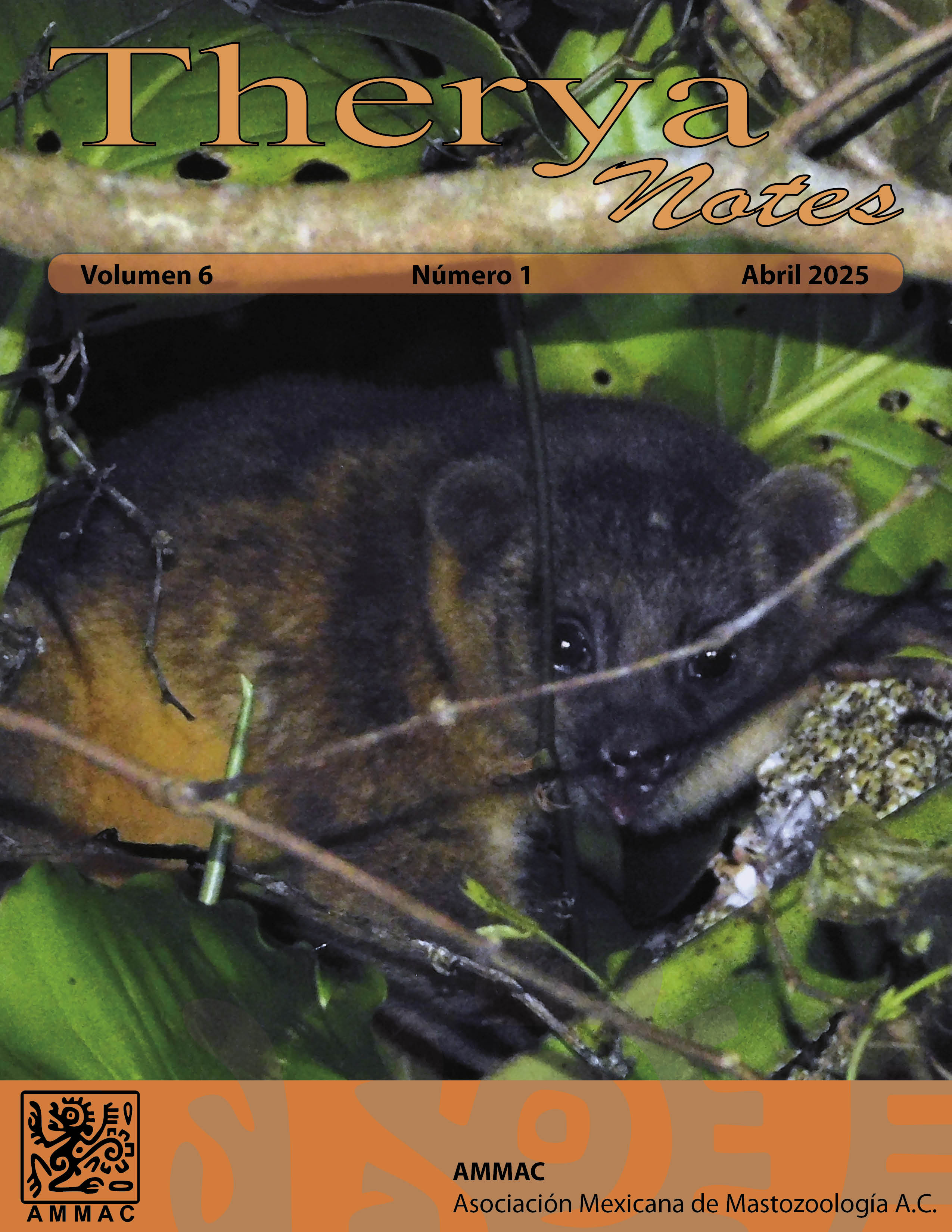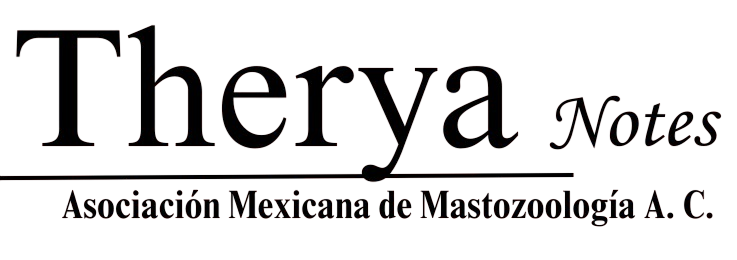Notes on the coexistence of sympatric northern raccoons and white-nosed coatis in a dry forest of northwest Costa Rica
DOI:
https://doi.org/10.12933/therya_notes-25-189Keywords:
Activity, camera, cover type use, distribution, Nasua narica, photo rates, Procyon lotor, sympatryAbstract
Differential resource use of sympatric species that co-exist is poorly known. Considering sympatric procyonid species inhabiting the dry forest of northwest Costa Rica (Santa Rosa National Park) we hypothesized northern raccoon (Procyon lotor) occurrence is relatively high in cover types where white-nosed coati (Nasua narica) is absent. We deployed 56 camera traps from June 2016-June 2017 to compare distribution and occurrence in cover types at each location. Additionally, we examined activity patterns derived from these and 45 other cameras in the same area monitored irregularly from 2011-2016. Over the course of a year, both species were detected only in Riparian Forest. Northern raccoons photo rates were higher in Mangrove and Beach Forest cover-types, with no records in Primary and Secondary Forests, whereas white-nosed coati’s records were higher in Secondary Forest and absent in Mangrove and Beach Forest or Grassland with Trees cover-types. Raccoons were nocturnal, and coatis were diurnal, throughout 24-hr diel period, and coati photo rates (1.37/100 trap nights [tn]; n = 20,416 tn) were more than twice those of raccoons (0.48). Differences observed for these species in the distribution of photos by cover type, time of day, and photo rates might suggest local allopatry in Santa Rosa National Park, likely the result of interspecific avoidance but perhaps also due to differences in food habits and predation, and competition with other species. Other techniques should be used to investigate these factors, but cameras can provide important insights into elusive species’ ecology.
Downloads
Published
How to Cite
Issue
Section
License
THERYA NOTES is based on its open access policy allowing free download of the complete contents of the magazine in digital format. It also authorizes the author to place the article in the format published by the magazine on your personal website, or in an open access repository, distribute copies of the article published in electronic or printed format that the author deems appropriate, and reuse part or whole article in own articles or future books, giving the corresponding credits. The Creative Commons CC BY-NC-SD license is used.![]()















